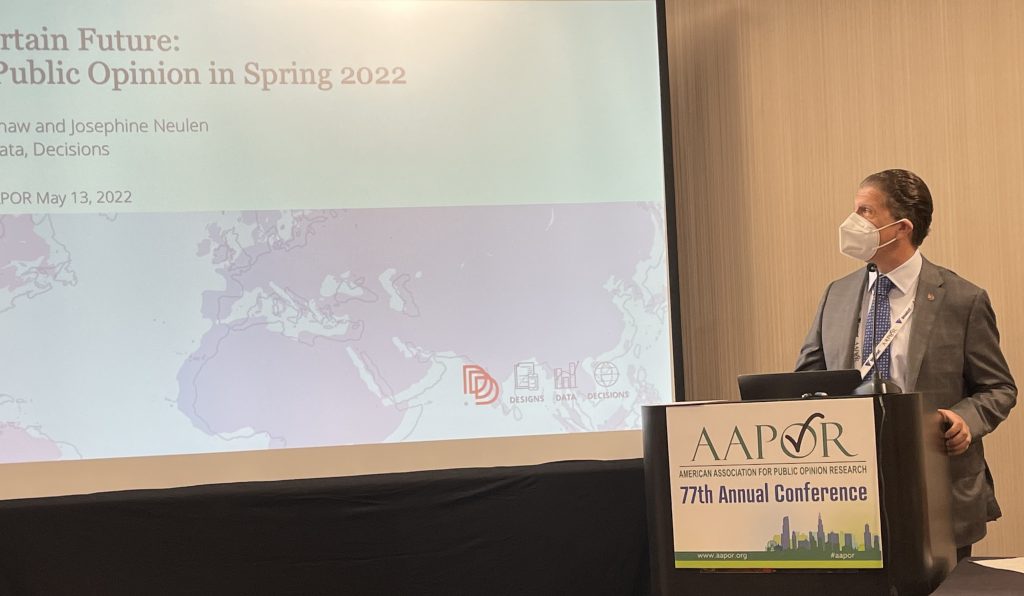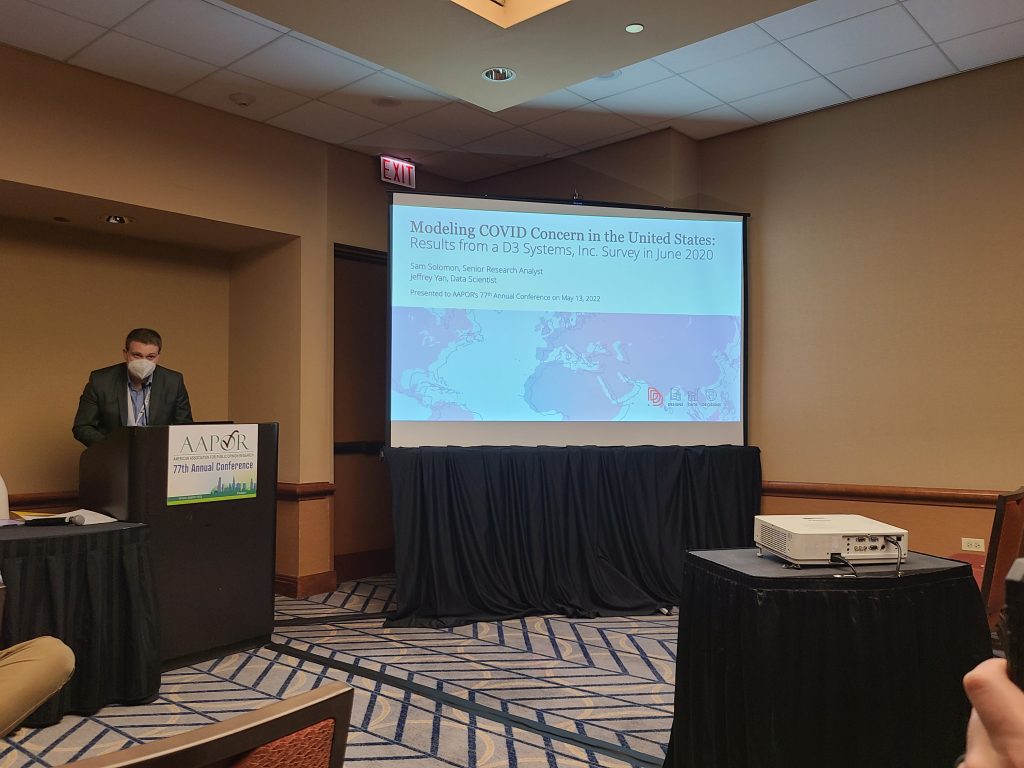D3 News
D3 Presents at AAPOR Conference 2022
May. 17, 2022
D3’s COO Matthew Warshaw and Senior Research Analyst Sam Solomon recently presented at AAPOR’s 77th Annual Conference in Chicago. Their abstracts are included below, and their full presentations have also been made available!
Matthew Warshaw, Afghan Futures:
Afghanistan fell to Taliban control on August 15, 2021, which has had a profound impact on the people of Afghanistan. ACSOR Surveys and D3: Designs, Data, Decisions have been polling in Afghanistan since 2003, and the return of the Taliban regime has impacted our polling operations. At the writing of this abstract, we have shifted our polling to CATI only to protect our interviewers and have continued our “Afghan Futures” polling series. We have data from prior to and after the fall of the U.S. backed Afghan government, and we intend to collect more data before the AAPOR conference in May 2022. During this presentation, we outline a current view of conditions in Afghanistan for average Afghans related to future of their country. We will look at the results from our national surveys and discuss what comes next for Afghanistan.

The goal of our “Afghan Futures” project is to continue to enrich public understanding of Afghanistan, as well as to share insights into the methodological and operational challenges of conflict-zone research. The project began in 2010 and includes results from over ten national face-to-face surveys. We have presented findings from our surveys at AAPOR in the past and believe now is an important time to present again as Afghans chart their way under the new Taliban government.
Sam Solomon, Modeling COVID Concern in the United States:
Using data from a self-administered online survey completed by 1,094 American adults using SurveyMonkey’s opt-in Audience Panel in June 2020, this paper explores different approaches like random forests and decision trees to modeling Americans’ concern about COVID, operationalized as agreement with the statement, “I am afraid that either myself or someone in my family may actually catch the Coronavirus.” The paper will explore which demographic and attitudinal variables were the best at predicting whether someone is concerned about COVID.

As the COVID-19 pandemic spread across the globe during the first half of 2020, the fight against the disease quickly became an all-of-society effort. Individuals’ willingness to wear masks and limit social interactions proved critical in slowing the spread. To that end, individuals’ levels of concern about the pandemic were instrumental in the containment, or lack of containment, of the virus in their country. This paper explores which factors were associated with concern about the pandemic in the United States.
Because the pandemic was set against the backdrop of the 2020 US presidential election, the paper explores whether and how political identities and attitudes intersected with ideas about the pandemic. The paper also provides an example of how survey data can be used to understand correlates of concern about the pandemic, providing more texture to the question of how Americans responded to this once-in-a-century crisis.